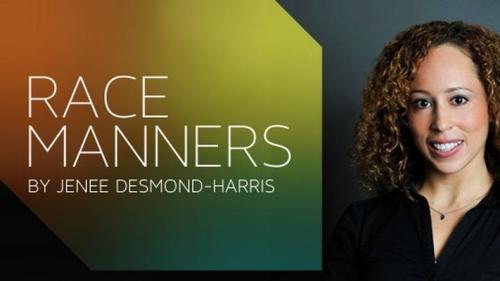From the NYT:
Racism Is Real. Trump Helps Show It.What’s striking, however, is how little evidence the Trump haters can gather that Trump is in any way biased against African-Americans:By JENÉE DESMOND-HARRIS APRIL 29, 2016
Jenée Desmond-Harris is a John S. Knight journalism fellow at Stanford University.
I have a confession: When Donald J. Trump swept five primaries on Tuesday, I was a little bit excited. And I don’t think I’m the only person who despises the role racism plays in American life who feels this way.
Let me explain.
For a certain group of voters, part of Mr. Trump’s appeal is obvious. They hear their own views echoed in his divisive and bigoted rhetoric. They’re the ones who nod in agreement that Mexican immigrants are rapists who are “bringing drugs” and that all Muslims should be barred from entering the United States.
They’re people who think the linguistic anachronism “the blacks” sounds appropriate. They yearn for the return to a long-lost “great” version of America that it’s safe to guess existed before the implementation of the Civil Rights Act.Okay! If that’s not Proof with a capital P I don’t know what it.
I’m not in this group. The prospect of a Trump presidency horrifies me. Like many others, I find the bigotry behind the Republican front-runner’s most controversial views infuriating and frightening.Let’s see what this Stanford’s fellowette’s first example is:But I also find it familiar. I’m a journalist who writes about race, so I spend a lot of time thinking about the way racism shapes American life, both in individual interactions and in the way institutions operate. What’s most frustrating is that, despite all the evidence, convincing people who would rather not believe that this is real can be hard.
Last March, I reported on the Department of Justice’s findings that the police and municipal courts in Ferguson, Mo., had consistently violated the constitutional rights of the city’s black residents.Yup, the Ferguson Fiasco.
The article included a summary of the abuse of power investigators uncovered, as well as the content of public officials’ emails. (One example: a photo of a bare-chested group of dancing women, apparently in Africa, captioned “Michelle Obama’s High School Reunion.”)Because that’s what Stanford pays her to do.Simply for presenting the investigation’s findings and the cops’ and court officials’ revealing words, I received a barrage of angry messages asking why I had to “make everything about race.”
I’ve heard the same sort of thing in response to news stories about police killings of unarmed African-Americans, black girls facing disproportionate school discipline, record numbers of anti-Muslim attacks. Stop being divisive. People who focus on these things are the real racists. Racism is in the past.And other people, many of them Establishment journalists, aren’t very skilled or unbiased about evaluating information.One thing has been made very clear to me: Many people resent being confronted with information about how racism still shapes — and sometimes, ruins — life in this country.
Tomás Jiménez, an associate professor of sociology and comparative studies in race and ethnicity at Stanford University, uses what he calls the “ghost metaphor” to describe the quandary of people who personally experience or aim to draw attention to racism. “It haunts every aspect of your life, but nobody else sees it and they don’t believe you” he said. “Sometimes it makes a very pronounced appearance, and that’s why people seize on it.”I don’t really think this metaphor of believing in pervasive, omnipresent racism is like believing in pervasive, omnipresent ghosts is really optimal from the point of view of justifying your belief in racism, but, apparently, nobody at Stanford is willing to point that out to Ms. Desmond-Harris.
That, he told me, is why Mr. Trump is refreshing to people who share his views, as well as to people who have always known that views like this exist.A lot of people seem to see Trump’s run as a referendum on truthfulness of The Narrative about race.In a world where racism and discrimination — both personal and systemic — shape opportunities and can even determine life or death, but are often denied, they’re rarely owned so boldly as they have been during this campaign.
As Professor Jiménez put it, “Trump and his supporters have turned the racial dog whistle into an air horn.”
The air horn is so piercingly loud that few can pretend they don’t hear it, or understand what it represents about the country.
He’s a test case, the street urchin in “The Emperor’s New Clothes.” If Trump can’t be silenced, who knows what he might say. And he might make it fashionable for Americans to exercise their First Amendment rights. Journalists must take a stand against that.
And yet, there’s little evidence that Trump is challenging The Narrative when it comes to race. He seems to have a more functional view that we ought to be able to discuss frankly the merits and demerits of permitting various foreigners into America, but he hasn’t wanted to get into the strengths and weaknesses of African-Americans, who are, after all, his fellow Americans.
But that is apparently too sophisticated a concept for the news media establishment to grasp.
Mr. Trump and his supporters have reignited that fear, even in people who claimed they couldn’t hear dog whistles. Even in people who swore they didn’t believe in ghosts.Great concluding metaphor!
Here’s a counter metaphor: Trump as the Scooby-Doo show. As you’ll recall, the usual plot on this cartoon show is for the gang to investigate reports of a ghost, but it usually turns out to be some self-interested hoaxster instead.
Of course, there’s little evidence that Trump is interested in doing that.












